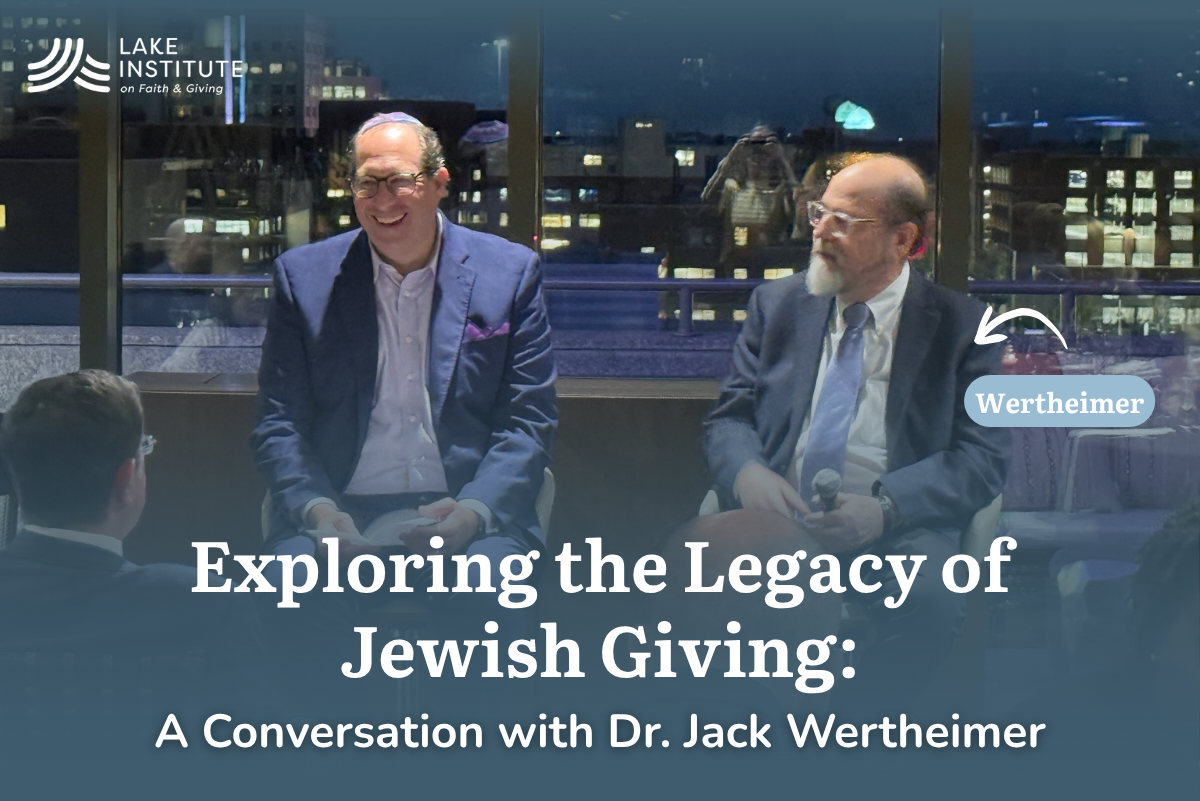Exploring the Legacy of Jewish Giving: A Conversation with Dr. Jack Wertheimer
Exploring the Legacy of Jewish Giving: A Conversation with Dr. Jack Wertheimer
Exploring the Legacy of Jewish Giving: A Conversation with Dr. Jack Wertheimer
Excerpts from a recent conversation between Dr. Jack Wertheimer, Lake Institute’s 2025 Distinguished Visitor, and Elizabeth Le’anani Coffee, Lake’s Managing Director
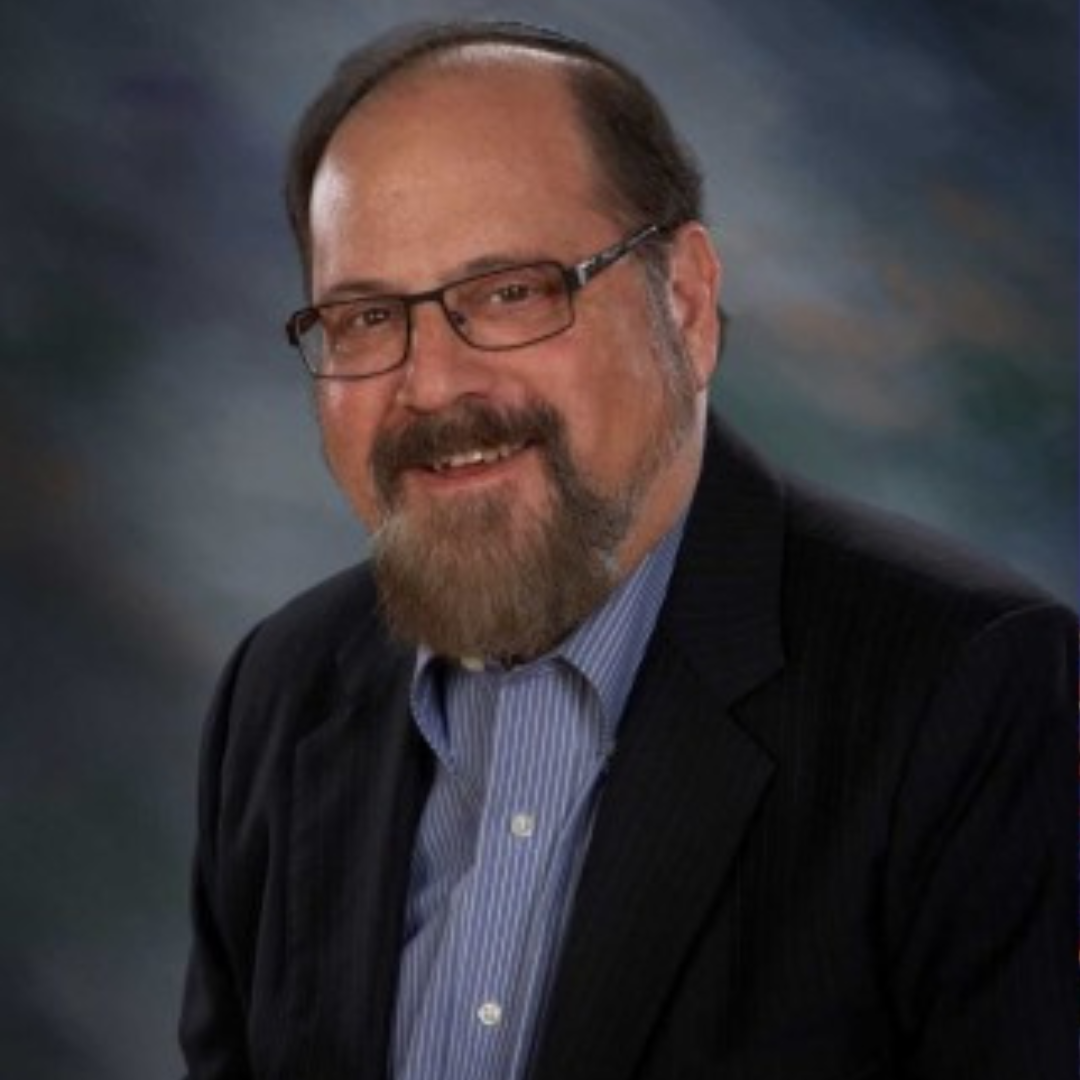
Recently, Lake Institute on Faith & Giving hosted Dr. Jack Wertheimer as our 2025 Distinguished Visitor. Dr. Wertheimer is emeritus professor of American Jewish history at the Jewish Theological Seminary in New York. His scholarship centers on modern Jewish life, particularly in the religious and communal trends shaping American Jewry since World War II. His most recent book is Jewish Giving: Philanthropy and the Shaping of American Jewish Life, which was the focus of his conversations with IU Lilly Family School of Philanthropy faculty and students, Lake’s Advisory Board, and a group from the Jewish Federation of Greater Indianapolis.
While in Indianapolis, our Managing Director, Elizabeth Le’anani Coffee, spent some time with Dr. Wertheimer. The following are excerpts from that conversation. Click here if you’d like to listen to the full conversation, which includes our Advisory Board Vice Chair, Rabbi Adam Miller.
Elizabeth Coffee (EC): How would you describe what makes American Jewish giving unique both in its motivations and in its methods?
Dr. Jack Wertheimer (JW): There are several different facets to American Jewish giving that are not necessarily the same as for other groups. One of the major questions that Jews have had to ask themselves is whether and to what extent are they giving to parochial Jewish causes? And to what extent do they want to give to nonsectarian causes? For most Jews, this is not a binary: they support Jewish and non-sectarian causes.
A second question is how do they prioritize between those two alternatives? To which do they give more of their dollars? And their answer, of course, changes over the course of time.
A more basic question concerns whether Jewish giving means support of causes that primarily aid fellow Jews or is Jewish giving motivated by what people like to think about as their Jewish values, values inculcated through religions teachings, family lore and historical experiences?
If the latter, their Jewish values may prompt them to support a hospital or research into a particular illness, which benefits Jews as well as many other people as well. Those are two of the basic questions that Jews must ask themselves. But in many other ways, Jewish giving is not so different from that of other types of populations – nor is the desire and motivation of wanting to help people who are in need.
EC: What is a story from Jewish history that would help the larger community understand the patterns of Jewish giving and how that continues to influence Jewish giving today?
JW: Your use of the word patterns is important here because this is not a static phenomenon, in the sense that new needs arise and old needs return.
There are shifts that occur in what gets emphasized and what does not. In earlier eras of American Jewish history, which goes all the way back to 1654 during the colonial era and all the way through the 19th century, as masses of immigrants arrived , the focus was very much on aiding needy Jews – indigent Jews who needed help to settle in this country and aid in their absorption process in the United States.
As the tide of Jewish immigration began to recede, the emphasis became much more on the needs of Jews abroad. More recently the focus has been increasingly also on strengthening the internal communal lives of Jews, in the sense of strengthening Jewish religious institutions, and educational and cultural centers to address a population of Jews lacking a strong Jewish education. Deprived of such an education, too many have been unable to explain to themselves and their children why be Jewish.
EC: As you have seen and or engaged with religious nonprofit leaders and Jewish nonprofit leaders, what strategies and practices have you seen as being successful in their way of garnering funds, but also maintaining relationships with Jewish funders or funders that are open to funding Jewish causes in their communities?
JW: With philanthropy, [people are] more likely to give when they know that their peers are giving also. One of the techniques that’s being used is to bring together peers as a spur to giving. That means gatherings of people in the same general social circle or occupational field for the purposes of learning about needs and committing to help financially.
There’s also a second aspect: not-for-profits must demonstrate that they are really accomplishing something important with donated money. That is especially necessary at a time when people feel that there are urgent needs; not-for profits must demonstrate that they’re addressing a crisis in a constructive fashion.
Some organizations that have been unable to demonstrate what they’re doing specifically in this moment of challenge are having much greater difficulty raising funds than those that can say, “look, we’re raising this money, and we are moving with speed to get those funds to those in greatest need. We are getting the money to the food pantry. We’re getting the money to counseling services. We’re getting money to synagogues.”
EC: Why does studying the history of Jewish philanthropy matter for understanding religious giving today? Why do we need to care about this?
JW: Well, it forms a case study in American philanthropic behavior, more generally. I can circle back to your initial question to me: To what extent is Jewish giving distinctive, to what extent are there important parallels to what’s happening in American philanthropy in general?
Jews in this country donate funds by employing the same vehicles as their non-Jewish peers. They establish foundations and open donor-advised funds. Both types of philanthropic vehicles have become popular over the past 30-40 years.
As civic and cultural institutions that once had excluded Jews became more inclusive and welcomed Jews as board members, the sums donated to non-sectarian causes by Jews skyrocketed. Simultaneously, Jewish donors took responsibility to maintain the infrastructure of domestic Jewish communities and aid Jews in need abroad. Even though the donor base for distinctively Jewish needs has been shrinking, enough funders continue to acknowledge that they have a special responsibility to support specifically Jewish institutions, because nobody else is going to do that.
In this regard, there are parallels between trends in Jewish philanthropy and the behavior of funders among many other American ethnic and religious groups.
The transcript text was lightly edited for reading.
The Power of Faith Leaders to Shape Generous Imagination
By Elizabeth Le’anani Coffee, Managing Director, Lake Institute on Faith & Giving
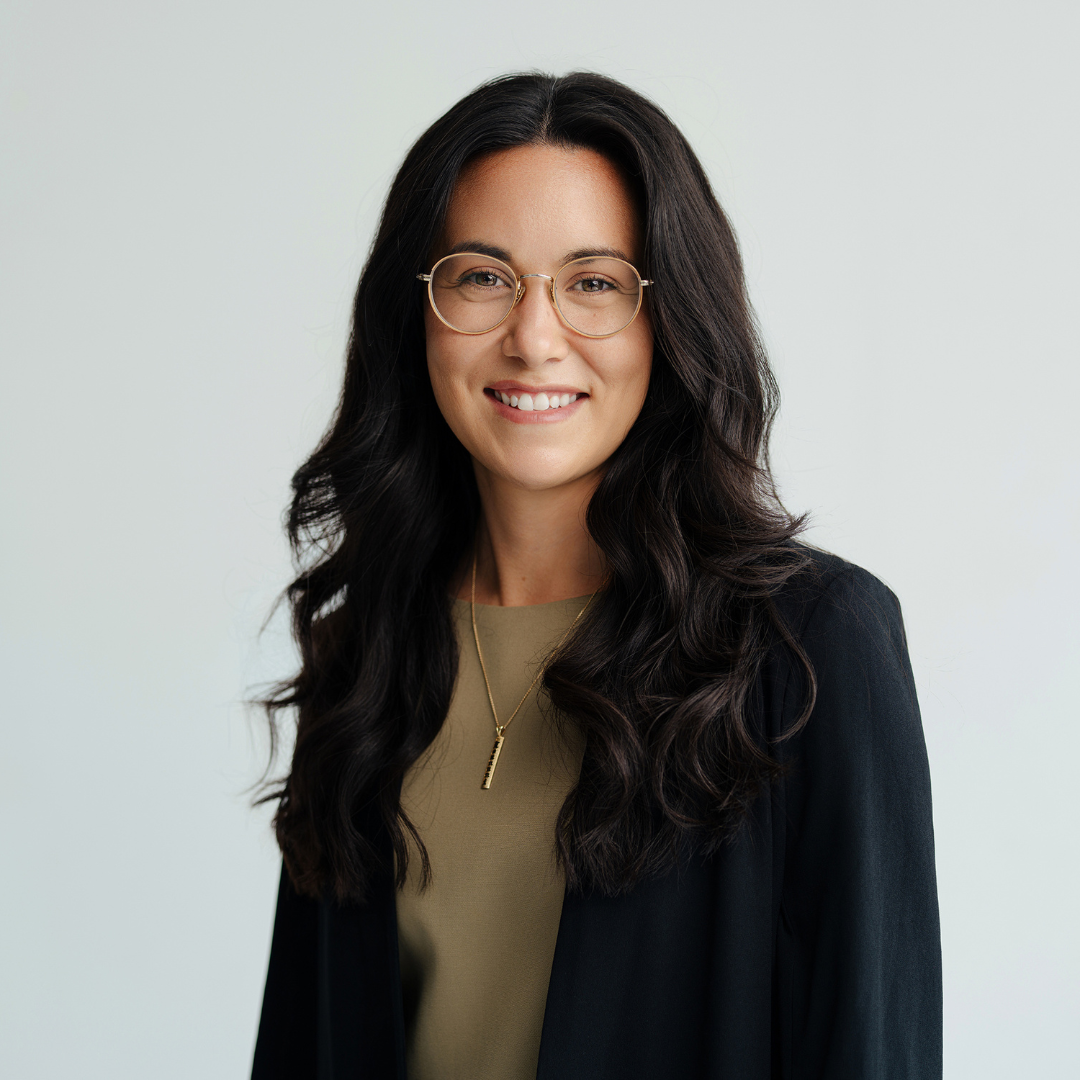
In our recent Distinguished Visitor conversation, Dr. Jack Wertheimer spoke about the history of Jewish giving and Jewish giving practices in the present day. He shared the story of Julius Rosenwald, the early twentieth-century president of Sears, Roebuck and Company. Rosenwald, a member of a Reform Jewish congregation in Chicago, became one of the most influential philanthropists of his era. He funded both Jewish causes abroad and a vast network of schools for Black students across the American South. What’s striking, as Wertheimer noted, is that Rosenwald’s expansive giving was profoundly shaped by the influence of his rabbi; someone who helped him see that faith-rooted generosity could reach far beyond the boundaries of his own community.
That story lingers with me because it reframes how we often think about the work of clergy and religious leaders in conversations about money. Wertheimer charges clergy not to “underestimate your ability to influence your congregants…not only to raise money for your congregation but to help them develop a much broader philanthropic agenda.” We tend to imagine fundraisers as those who make appeals or craft stewardship campaigns, yet Rosenwald’s rabbi reminds us that faith leaders are also cultivators of generous imagination. They help people make connections between belief and action, identity and responsibility, story and stewardship.
In many traditions, there are teachings that tie generosity to the very heart of what it means to be human, to see others as family, to heal what is broken, and to build what can endure. For those truths to shape a community’s life, they must be taught, modeled, and named aloud. It takes a leader’s imagination to help people see that their resources, financial and otherwise, are instruments of care and hope.
That may be the intentional work of the bimah, pulpit, minbar, and the like, but it is also the prophetic work of our time. As many faith leaders wrestle with the reality of shrinking institutions and widening skepticism about organized religion, Rosenwald’s story reminds us that the most powerful invitation we can extend is not “give to keep us alive,” but “give to make something more possible.”
Generosity, in this sense, is not transactional. It’s transformational. It flows from the stories, rituals, and moral visions that our faith traditions hold in trust. When leaders name and nurture that connection, they do more than raise money, they cultivate a way of seeing.
Perhaps that is the enduring lesson of Rosenwald’s legacy and of Wertheimer’s reminder to today’s clergy: faith leaders still have the power to shape the generous imagination of their people. And when they do, whole communities, and generations to come, can be changed by it.
American Jewish Philanthropy Report
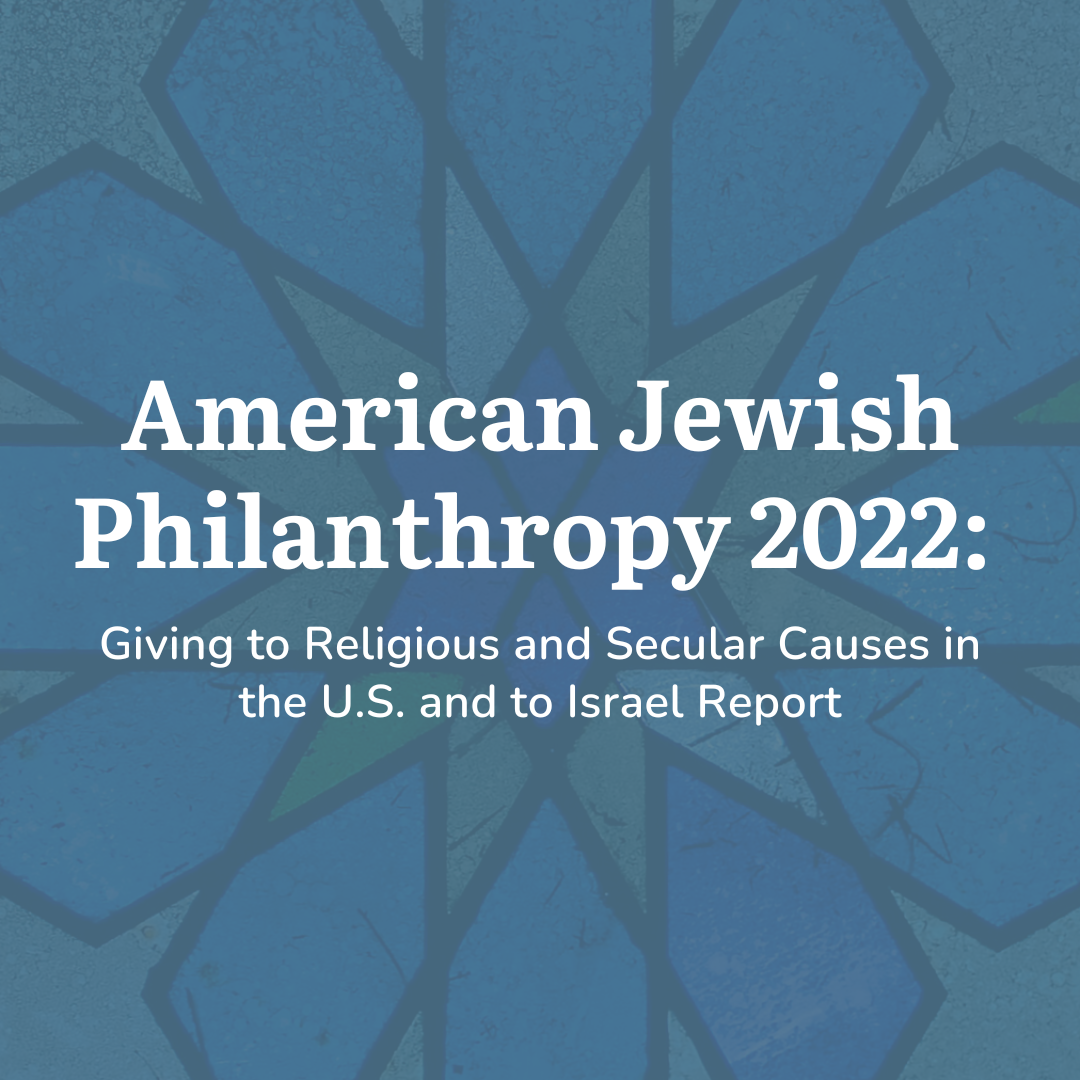
This report examines American Jewish giving and volunteering in 2022, with a strong emphasis on religious giving and giving to Israel-focused organizations. The analyses that make up the findings of the report are based on a survey developed for this study which was conducted by SSRS in March 2023. The survey and these analyses are enhanced by prior studies of Jewish philanthropy.
Developing Legacy Giving in Congregations
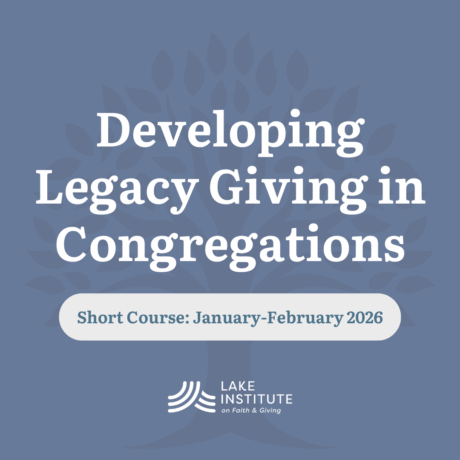
Equip your congregation for sustainable impact by enrolling in Lake Institute’s Developing Legacy Giving in Congregations course (Jan–Feb 2026).
Over four weeks of live and asynchronous sessions, leaders will learn how to design legacy giving programs. From understanding donor motivations and gift vehicles to crafting invitations and building momentum, this course gives you practical tools to create a legacy giving program.
The online learning platform opens on January 20, 2026, with the first plenary session on January 27, 2026.
Subscribe
Insights is a bi-weekly e-newsletter for the religious community and fundraisers of faith-based organizations that provides:
- Reflections on important developments in the field of faith and giving
- Recommended books, studies and articles
- Upcoming Lake Institute events

